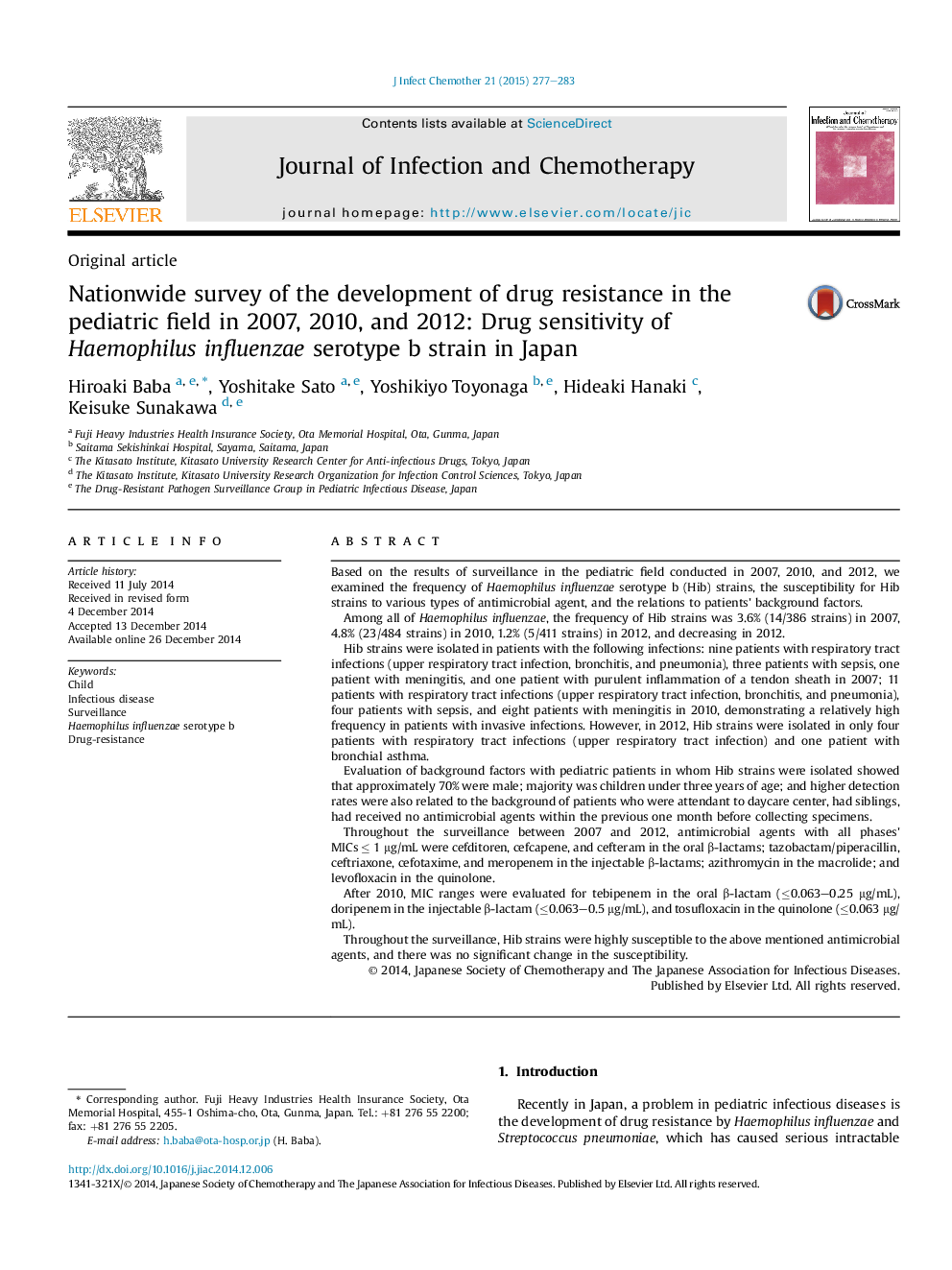| Article ID | Journal | Published Year | Pages | File Type |
|---|---|---|---|---|
| 3376879 | Journal of Infection and Chemotherapy | 2015 | 7 Pages |
Based on the results of surveillance in the pediatric field conducted in 2007, 2010, and 2012, we examined the frequency of Haemophilus influenzae serotype b (Hib) strains, the susceptibility for Hib strains to various types of antimicrobial agent, and the relations to patients' background factors.Among all of Haemophilus influenzae, the frequency of Hib strains was 3.6% (14/386 strains) in 2007, 4.8% (23/484 strains) in 2010, 1.2% (5/411 strains) in 2012, and decreasing in 2012.Hib strains were isolated in patients with the following infections: nine patients with respiratory tract infections (upper respiratory tract infection, bronchitis, and pneumonia), three patients with sepsis, one patient with meningitis, and one patient with purulent inflammation of a tendon sheath in 2007; 11 patients with respiratory tract infections (upper respiratory tract infection, bronchitis, and pneumonia), four patients with sepsis, and eight patients with meningitis in 2010, demonstrating a relatively high frequency in patients with invasive infections. However, in 2012, Hib strains were isolated in only four patients with respiratory tract infections (upper respiratory tract infection) and one patient with bronchial asthma.Evaluation of background factors with pediatric patients in whom Hib strains were isolated showed that approximately 70% were male; majority was children under three years of age; and higher detection rates were also related to the background of patients who were attendant to daycare center, had siblings, had received no antimicrobial agents within the previous one month before collecting specimens.Throughout the surveillance between 2007 and 2012, antimicrobial agents with all phases' MICs ≤ 1 μg/mL were cefditoren, cefcapene, and cefteram in the oral β-lactams; tazobactam/piperacillin, ceftriaxone, cefotaxime, and meropenem in the injectable β-lactams; azithromycin in the macrolide; and levofloxacin in the quinolone.After 2010, MIC ranges were evaluated for tebipenem in the oral β-lactam (≤0.063–0.25 μg/mL), doripenem in the injectable β-lactam (≤0.063–0.5 μg/mL), and tosufloxacin in the quinolone (≤0.063 μg/mL).Throughout the surveillance, Hib strains were highly susceptible to the above mentioned antimicrobial agents, and there was no significant change in the susceptibility.
